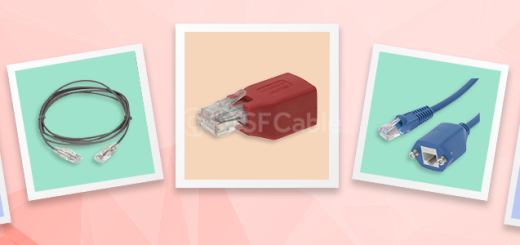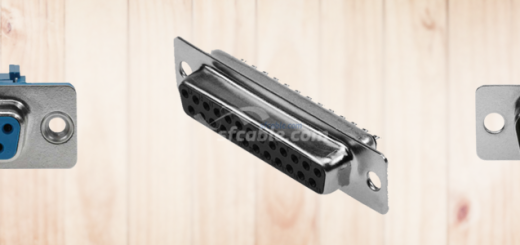The Ultimate Guide to Podcast Studio Setup for Beginners
Introduction
Any space can serve as a podcast studio, a quiet room, a strong voice, and a favorable gathering. Across industries from gaming to IT-clear audio is now the baseline expectation. Many independent content creators, however, complain of loud echoes, noises out of the background, or an unreliable agent.
Such a gap comes when content, or rather production, lands on the buffet without a proper foundation with fundamental considerations about sound, it could also be deemed the audio buffet! A professional podcast studio setup makes your sound worth the ears and builds credit.
It is meant to grow with you through remote interviews, simple content work, or perhaps business-concise audio. This guide will walk you through setting up a podcast studio using real-world options at suitable price points.
It’s designed for anyone looking to build a podcast recording studio on their own, with tested and proven podcast studio setup ideas that actually work.
Step 1: Choose Your Podcasting Space
Every excellent podcast starts with a proper space. Before the microphones and mixers, the room did most of the work. A silent location with minimum external interference is mandatory to record clean audio.
Check for a room with many soft surfaces; the acoustics in a room with hard surfaces will appear artificial. Carpets, sound-absorbing curtains, and even bookshelves are good choices. One can even install foam panels in corners to reduce echoes if the room is small.
For several podcasters, a spare bedroom or walk-in closet will afford better control than a huge open commercial studio. Having chosen this space is the first step toward learning how to set up a podcast studio that sounds professional from day one.
Step 2: Select the Right Podcast Equipment
Microphones
The microphone determines how your voice gets to the audience. USB mics are easy to plug in and are best for solo creators. XLR mics will give you more clarity but require some extra gear.
A beginner might select Samson Q2U or Audio-Technica ATR2100x; however, dive in professional use with Shure SM7B. What is good for you will depend on your podcast room setup, number of hosts, and cleanliness of your desired sound.
Audio Interface or Mixer
Essentially, an audio interface connects an XLR mic to the computer. It offers input gain control and hence improves signal quality. The Focusrite Scarlett Solo is pretty good for single-mic work. For two mics, Scarlett 2i2 is an upgrade worthy of consideration.
If you will be recording with guests or need multichannel recording, a mixer like the RODECaster Pro will ease your tasks. Your XLR mics won’t even work without an interface or any adapters attached!
Headphones
Closed-back headphones tend to be better for podcasting because they don’t leak sound. Otherwise, the microphone can pick up echoes or sound bleeding, which helps you identify problems later on.
Audio-Technica ATH-M40x and Sony MDR-7506 are classic choices by many creatives and engineers. Never consider wearing open-back or wireless cans during the recording session.
An excellent headphone monitoring system is as critical as the mic itself.
Mic Stands and Boom Arms
A mic stand aids your audio stability and lets you go hands-free. Tabletop stands are fine for general use, but they will pick up whatever desk noise may abound. Boom arms allow you to adjust the mic’s position without blocking your screen’s view.
Plus, these arms reduce handling noise and look nice on camera. A floor stand would be good if you have room and if you record standing. Good cable routing underneath the arm or desk helps avoid untangling.
Pop Filter and Shock Mount
These two pieces are tiny yet decisive. A pop filter helps block hard, breathy noises like “P” and “B” from entering the mic. A shock mount holds the microphone firmly and absorbs bumps and shakes.
Even the lightest tap on the table will ruin a take without these. Most beginners go ahead without them and then have to re-record. These are your good friends, keeping your podcast setup neat and consistent.
Putting It Together
Each component in this setup serves a purpose. The microphone captures your voice, the interface processes it, and the headphones are used for monitoring. Stands and mounts allow you to record stably, whereas filters protect the sound quality.
Choosing what is right for you will not necessarily mean the most expensive option; it means building a setup to fit your room, voice, and goals.
Step 3: Choose Recording and Editing Software
Editing is where a podcast either sounds polished or gets ignored. After recording, choosing the right software is not about features but fit. Audacity or GarageBand is enough for many creators to cut noise and trim silence.
These tools work well in a small podcast room setup where speed matters more than layers. Reaper and Adobe Audition offer deeper control, cleaner automation, and better file handling for teams or pro editors.
When guests are remote, platforms like Zencastr, Riverside.fm, or SquadCast capture each voice locally, avoiding call lag or glitches. Each tool has a learning curve, but not choosing one leads to stalled episodes and wasted hours.
In a good podcast setup, the software doesn’t just record—it protects the time you spend creating.
Step 4: Studio Setup and Layout
Editing is where a podcast sounds decent or rightfully gets ignored. After recording, the choice of software is, so to speak, not about features but about fit. Audacity or GarageBand is fine for many podcasters for removing noise and silences.
In other words, these tools do well in an environment where the podcast is recorded in a little room, where speed takes precedence over layering. Reaper and Adobe Audition, on the other hand, offer many capabilities, more advanced automation, and excellent handling of files for teams or professional editors.
In cases where the guest is tied remotely, platforms such as Zencastr, Riverside.fm, or SquadCast let each voice get recorded locally, keeping the audio free from call lag or glitches. Although every software has pros and cons, picking one can drain hours with little compensation.
In top podcast setups, good software records and helps you save time while creating.
Step 5: Test Your Setup
The first mistake many make is hitting “record” without listening. Testing your podcast setup is not a mere formality; it is the very protection of your sound. Start your tests with a short recording in your prepared podcast room and listen closely afterward.
Consider those background noises that may be hiding behind low-pitched hums from the light tube or the computer fan or the air conditioner suck. The mic should remain consistent from your mouth, approximately an arm’s length or a hand’s width.
Next comes the gain level adjustment so that your voice fills the recording but never peaks. Closed-back headphone monitors are to be worn by the podcasters at all times so that issues get caught way ahead of their first appearance in the editor. Those few minutes of blank noise can save a recording if tested well.
Step 6: Backup and File Storage
One lost file is one lost episode-from the error most creators make only once. Backup constitutes the absolute critical thing in the life of any podcast setup.
Recordings should always be saved in two places at least, with one copy on local hard drives and another set up in the cloud, say in Google Drive or Dropbox. Be sure to use clear and consistent labels that include the episode number and date to avoid any confusion at a later stage.
Create folder sets for raw files, edited versions, and final exports. This simple storage procedure helps you stay organized and helps you recover quickly in times of mishap.
Maintaining Your Podcast Studio
After each session, wipe down microphones, headphones, and surfaces. As dust settles, it wears away with time.
Cables and connectors require frequent cleaning to avoid the buildup of static interference.
Update your record/editing software now and then, if only for security reasons and software incompatibility.
Have those cables tested every month, likewise adapters and ports; you will be able to catch a fault before a recording session goes into a fail.
Replace the worn-out foams and pop filters when they lose shape or start cracking.
Backup batteries and extra cables should be kept in case a quick fix is needed during live sessions.
Keep equipment in a dry place, which should normally mean a nice cool place, for maximum protection against moisture damage to sensitive electronics.
Conclusion
Most creators make the mistake of starting big. But in most podcast studio setups, the basics build the foundation. A quiet space, the right cables, and stable power connections go further than most people realize.
As time passes, upgrading becomes easier if you have done the basics well. Things like XLR cable, audio adapters, power cords, and surge protectors from SF Cable go a long way towards supporting a clean and reliable podcast room set-up.
Starting simple is most often best, whether this is your first podcast set-up or upgrading to something more advanced. For those asking how to set up a podcast studio, the answer starts with basic dependable components, and from there, it just grows.
FAQs
1. What is the most important part of a podcast studio setup?
The most important part is choosing a quiet space. A silent room with soft surfaces gives you clean sound right from the start.
2. What basic equipment do I need for a podcast studio setup?
You’ll need a good microphone, audio interface, headphones, and a mic stand. Adding a pop filter and shock mount improves your sound even more.
3. How should I test my podcast studio setup before recording?
Do a short test recording and listen with closed-back headphones. Check for background noise and make sure your mic gain is set right.


